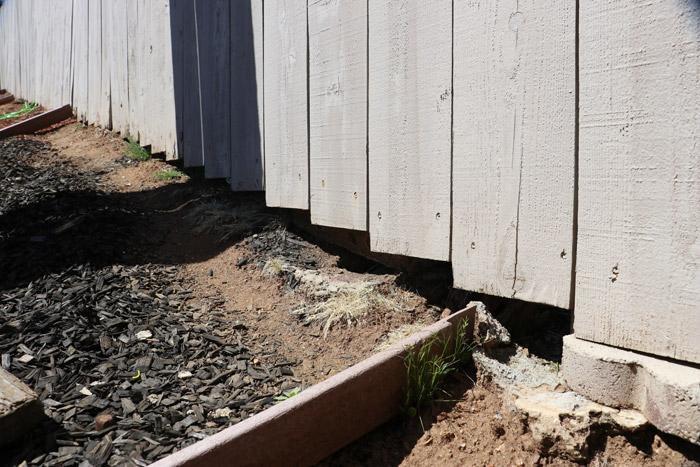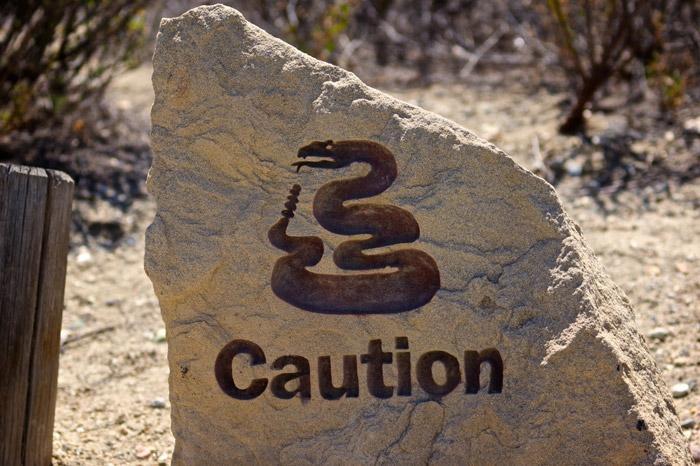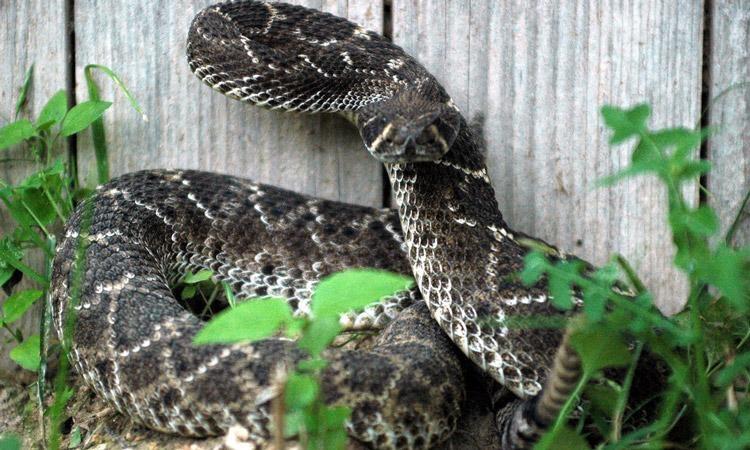Rattlesnakes! If you live in the western part of the United States, chances are you've encountered these pests in your backyard and wondered what was the best way to protect your family. Ultimately, the most effective strategy is to discourage them from entering your yard in the first place. Rattlesnake-proofing your property involves planning, hard work, and constant diligence. With a bit of help, it's a task you can accomplish on a spring afternoon, earning you some bragging rights at Monday's water cooler chat. By creating an unwelcoming environment, you can effectively deter rattlesnakes and ensure the safety of your home and loved ones.
Don't worry, though - no fortress is impenetrable, so we've got you covered with some professional advice on how to get rid of rattlesnakes quickly and easily, too!
What's Your Next Home Improvement Project?
- How to get rid of rattlesnakes: To effectively remove rattlesnakes, utilize professional wildlife services, safe trapping methods, or, as a last resort, humanely kill them if permitted by local laws.
- Professional assistance: Enlist professionals for safe relocation to handle rattlesnakes without risking personal safety.
- Using traps and tools: Employ tools like snake traps and long-handled tongs to capture and remove rattlesnakes from your yard effectively.
- Encourage snakes to leave: Create vibrations or utilize a high-pressure water hose to gently persuade the snake to exit your area.
- Lethal options: If necessary and legal, use firearms or garden tools to humanely dispatch a snake posing immediate danger.
- How To Get Rid Of Rattlesnakes
- Protecting Your Family And Pets From Rattlesnakes
- Training Classes To Help Pets Avoid Rattlesnakes
- Start By Looking for Ways To Deter Rattlesnakes
- Keeping Rattlesnakes From The House:
- If You See A Rattlesnake In Your Yard - Remain Calm
- Make Sure to Do Regular Maintenance to Maintain Your Rattlesnake Proof Yard!
While visiting my friend Bill this weekend, he showed me what he was doing to protect his yard from rattlesnakes. As a Marine, he was used to doing what needed to be done to protect himself and his squadmates. Today he uses those same basic skills to help him get through tough projects like protecting his house and family from rattlesnakes and other dangerous critters!

How To Get Rid Of Rattlesnakes
The best and more effective solution to getting rid of rattlesnakes is to keep them away in the first place. Despite this advice, these snakes are almost unstoppable if they sense something that they need to survive - food, water, shelter. No matter how good of a snake fence you build - things can fall down, and the same can be said for every other rattlesnake deterrent as well. So, let's take a quick look at three things you can do if you find a rattlesnake in your home or yard.
Contact Professional Wildlife Removal Services
The safest and most recommended method for dealing with a rattlesnake is to contact professionals who are trained in safely handling and relocating these reptiles. They can capture the snake and release it in a suitable habitat away from residential areas.
Set Snake Traps In Your Yard
Employ specially designed traps that capture snakes without injuring them. Set these traps in areas where the snake has been seen frequently, and call wildlife experts to relocate the snake once it's captured. Make sure the trap is humane and checked regularly.
Use a Long-Handled Snake Tong
While you shouldn't attempt this on your own without experience or training, using a long-handled snake tong allows you to carefully pick up the snake while maintaining a safe distance from it. After capturing the snake, place it in a secure container for transport to a non-populated area or dispose of it by a professional snake removal service.
Create Vibrations
Gently creating vibrations in the ground can encourage a rattlesnake to leave the area. Heavy walking or tapping the ground with a long tool can make the environment feel unstable for the snake, prompting it to move elsewhere. Be careful to avoid getting too close though as you don't want to frighten it. Most snakes want to avoid human interaction though, so this can be a good way to have the rattlesnake removed by itself without any harm.
Use A High-Pressure Water Hose
A gentle stream of water can persuade the snake to leave without harm. Spray water from a safe distance to encourage the snake to find a drier, quieter place. Use only enough water pressure to motivate the snake to move without causing injury. This method is unlikely to get rid of the rattlesnake from your yard entirely, but it can be effective if the snake is spread across an entry point to your house.
Lethal Action - Killing Rattlesnakes Is A Method Of Last Resort!
Consider lethal action as a last resort and only if permitted by local laws if the snake poses an immediate threat to household members or pets. Check local wildlife regulations, as many areas protect rattlesnakes. If lethal action is necessary, it should be performed humanely and responsibly.
For centuries, man has used different ways of removing rattlesnakes and invented various methods that quickly and permanently neutralize the threat. Modern options have obviously expanding the ways to handle these situations safely:
- Firearms: Utilizing a short break-action shotgun chambered in 20-gauge or .410 bore, or handguns with snake shot for precise targeting from a safe distance.
- Garden Tools: Employing a garden hoe or shovel to deliver a sharp, decisive blow to the head of the snake, aiming for a humane and instant kill.
- Lethal Traps: Setting traps designed to kill snakes through a spring-loaded mechanism that delivers a lethal blow upon triggering.
- Chemical Solutions: Chemical repellents or toxicants intended to kill snakes are used strictly where legal and as a final resort due to environmental and safety concerns. This is not a good way to remove rattlesnakes because they exclusively eat live food. Poisoning a water source or injecting poison gas into a burrow is a possible way of killing rattlesnakes.
- Professional Wildlife Handlers: Hiring experts to handle the situation, who can either humanely euthanize or relocate the snake according to local laws and ethical considerations.
When considering lethal methods, ensure they are humane, quick, and in compliance with local wildlife regulations.

Protecting Your Family And Pets From Rattlesnakes
It isn't always easy to get rid of rattlesnakes, so if you live in an area where snakes also exist, make sure to invest some time in training your pets and family on what to do if they encounter one.
Educating Your Family
Despite all your diligence in making your home rattlesnake-proof, there is no substitute for sitting down with your family and discussing what to do if you see a rattlesnake in the yard or in your home. Make sure your children know never to approach the rattlesnake and to back away slowly if they find one by surprise. You should also have them know who to call in the case of an incident. This includes animal control for help removing the rattlesnake from your house and also for medical help if something goes wrong. Every rattlesnake bite should be treated as an emergency, and immediate medical attention is crucial.
Preparing A Snake-Safe Play Area For Your Kids
Sometimes, it just isn't possible to protect your entire yard from rattlesnakes, so you should focus on creating a safe space that is easy to maintain. This would include a robust snake fence and eliminating all the things that could attract snakes, such as tall grass and hiding spaces.
If you don’t have an existing fence, then you’ll want to follow this advice but build the wire mesh to at least 36” high so that snakes can not climb over. For those with large yards, consider simply creating a “rattlesnake-free zone” that is large enough for your kids to play in that also protects your back door and other key areas of the yard. This will help reduce costs compared to fencing in your entire space. In our case, we selected a wire mesh, but any material that has a smooth surface will work well since the rattlesnake will not be able to climb it if there’s no way to grip.
Plant the barrier at least 12” under the ground so that it is sturdy and helps to eliminate the possibility of rattlesnakes being able to infiltrate through holes in the ground.
Since this is a much smaller area it will be far easier to defend against invasion.
Training Classes To Help Pets Avoid Rattlesnakes
Most communities in areas where rattlesnakes live have classes for dog owners. If your dog or other pets will be wandering around in the yard unattended or go on walks with you through natural areas, rattlesnake encounter training for dogs is something you should absolutely consider.
These classes typically involve professional dog trainers who will expose dogs to a live rattlesnake's sight, sound, and smell in a controlled environment. The snake is usually muzzled or defanged for safety.
When the dog approaches the snake, it receives a mild shock from an electric collar, creating a negative association with the reptile. This aversion training helps dogs learn to avoid rattlesnakes in the wild, potentially saving their lives. Many classes also teach home owners how to recognize signs of a rattlesnake bite and what immediate steps to take if their pet is bitten.
It's important to note that while these classes can be effective, they are not foolproof. Regular refresher courses are often recommended to reinforce the training. Additionally, some experts suggest that cats can benefit from similar training, although it may be more challenging due to their independent nature.

Start By Looking for Ways To Deter Rattlesnakes
The first step towards rattlesnake proofing your yard starts with doing a site survey and taking the time to look for ways that rattlesnakes might get in. If you already have a fence, make sure to look for holes as well as debris that might be leaning up against the fence. Whether you already have a fence or not, you are almost certain to have holes or gaps at the bottom that are easy for the rattlers to sneak under. Installing snake fencing can be an effective way to prevent rattlesnakes from entering your yard.
Food and Water Sources Attract Snakes and Their Food Sources
Generally, if you see a rattlesnake in your yard, it is looking for water, food, or shelter. This includes rodents living in your yard, bird feeders accessible from the ground, and being contientious to avoid leaving pet (or human) food outside for extended periods. Similarly, make sure to also keep garbage can lids closed tightly so they can’t get in there.
The same is true for water sources such as leaky garden hoses, irrigation systems, and bird baths.
One unconventional way to get rid of rodents is to invite non-venomous gopher snakes. These snakes can help control rodent populations that might attract snakes.
While effective, I'm not certain that importing gopher snakes is a solution to getting rid of rattlesnakes that my wife would appreciate!

Landscaping Deterants To Avoid Attracting Rattlesnakes
When it comes to designing and landscaping your yard, a few thoughtful considerations can go a long way in deterring snakes. Here are some practical tips to help you create a snake-free yard:
- Remove Debris and Clutter: Keep your yard free of debris like rock piles, wood piles, and other clutter. These can provide perfect hiding spots for snakes. Regularly clean up and organize your yard to eliminate these potential shelters.
- Maintain a Clean and Tidy Yard: Regularly mow your lawn, trim weeds, and remove dead vegetation. A well-maintained yard reduces the number of hiding spots for snakes and makes it easier to spot any that might wander in.
- Use Snake-Proof Fencing: Consider installing a snake-proof fence around your yard. This can act as a physical barrier to prevent snakes from entering. Make sure the fence is at least 36 inches high and buried at least 12 inches underground to be effective.
- Avoid Using Mulch and Compost: Mulch and compost can attract rodents and other small animals, which in turn attract snakes. Opt for alternative ground covers that are less likely to attract these creatures.
- Use Plants That Are Not Attractive to Snakes: Some plants, like lavender and rosemary, are known to repel snakes. Incorporate these into your landscaping to help deter snakes naturally.
- Avoid Using Bird Feeders and Pet Food: Bird feeders and pet food can attract rodents and other small animals, which in turn attract snakes. If you must use bird feeders, place them in areas that are less accessible to ground-dwelling creatures.
- Keep Your Yard Well-Watered: While snakes need water to survive, a well-watered yard can be less attractive to them than a dry one. Ensure there are no standing water sources that could attract snakes.
- Avoid Creating Snake Habitats: Steer clear of creating areas in your yard that can provide shelter and ambush points for snakes, such as rocky outcroppings and south-facing slopes. Instead, design your yard with open spaces and minimal cover.
By following these landscaping and design tips, you can create a yard that is less attractive to venomous snakes and significantly reduce the risk of them making your property their home.

Keeping Rattlesnakes From The House:
If you've properly installed your fence and eliminated hiding spots in your yard, chances are that you can avoid any possibility of having a rattlesnake enter your house. However, this is always a possibility, especially on hot days when they might seek shelter under your porch, behind boxes in the garage, in cracks in the foundation, crawlspace areas, even gaps in your windows, doors, and vents.
Luckily, by checking these areas, and other openings to your home you can help make the house more rattlesnake proof. It will also help eliminate the chances of other critters getting in too.
One of the big things to check here is to look for gaps below doors and especially so in the case of you garage door as well as the door from your garage to the house. While you have a great rattlesnake-proof fence protecting the yard, a rattlesnake can sneak into your garage where there's probably plenty of space to hide.

If You See A Rattlesnake In Your Yard - Remain Calm
If you spot a rattlesnake in your yard or home, stay calm and immediately send children, pets, and anyone frightened indoors. This will give the snake plenty of space to move freely without feeling threatened.
If you've effectively rattlesnake-proofed your yard by removing attractors and hiding spots, the snake will likely move on. However, if the snake seems trapped due to your proofing efforts, contact a professional such as animal control or the police.
Remember, most rattlesnakes prefer to avoid confrontation and will not strike unless provoked or threatened.
If you're not trained, trying to kill a rattlesnake can increase the risk of bites, so it's safer to leave this task to professionals. Rattlesnakes also play a vital role in controlling rodent populations, underscoring the importance of coexisting with them.
Just as you would hire pest control for insects and vermin, rely on professionals to handle rattlesnake removal. This emphasizes the idea that the best way to deal with rattlesnakes is to prevent them from entering your yard in the first place.

Make Sure to Do Regular Maintenance to Maintain Your Rattlesnake Proof Yard!
Just like the work Bill's friends did to protect their base from unwanted intruders in Iraq, it's important that you maintain your yard so that it remains rattlesnake proof. Make sure to check the fence at least once a week and after any storms to ensure that no gaps have appeared and that there is no vegetation growing on the fence that a snake can use to crawl up it. If you do this, you can relax knowing that your family is protected!
